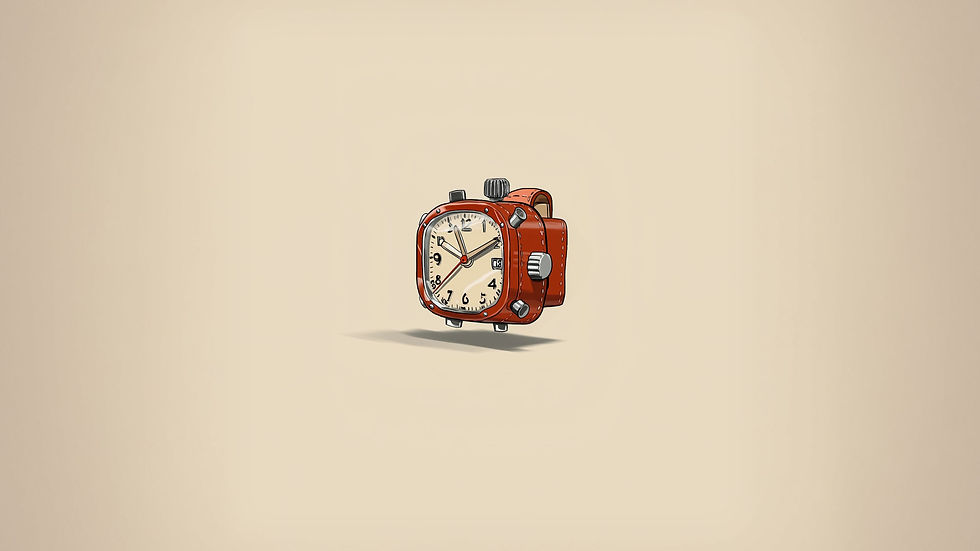From Ideas to Interfaces: How I Start a UX Design Project from Scratch
- Prabhash Kumar
- Jul 1
- 3 min read

As someone transitioning from graphic design into the world of UX, I often get asked—how do you even begin a UX project? Truth is, starting can feel overwhelming. But over time, I’ve found a process that helps turn a rough idea into a structured, human-centered design. In this post, I’ll walk you through how I approach a UX design project from scratch—step by step—based on personal and prompt-generated projects I’ve worked on for my portfolio.
Whether you’re a fellow beginner or just curious about the process, I hope this gives you clarity and motivation to begin your own UX journey.
Step 1: Understand the Problem
Every project starts with a why. If you don’t understand the problem you’re solving, you’ll end up designing features people don’t need. I start by asking:
Who are the users?
What problems are they facing?
What is the product trying to achieve?
For my EV charging app concept, I began by identifying pain points EV drivers face—like not knowing where the nearest charging station is or whether they’ll have enough battery to reach it. That one insight formed the foundation of everything else.
“Fall in love with the problem, not the solution.” — Uri Levine, Waze Co-founder
Step 2: Do a Quick Competitive & User Research
Even if I can’t conduct interviews or surveys (which is ideal), I still try to read reviews, scan Reddit threads, or use AI tools to simulate personas. I ask:
What are users saying about similar products?
What do they love or hate?
What features are common across competitors?
This helps me avoid reinventing the wheel—and also spot gaps I can solve for.
Step 3: Define User Personas & Journey
Once I understand the users, I build lightweight personas. These aren’t complicated—they're simple documents with user goals, frustrations, and basic behaviors. Then I map out their journey:
What steps do they take to solve the problem now?
Where do they get frustrated?
How could my product make it easier?
This gives me clarity on what to prioritize in the user flow.
Step 4: Sketch the Flow and Wireframes
Now comes my favorite part—getting ideas out of my head. I start with messy, hand-drawn sketches or wireframes in Figma. The goal isn’t beauty—it’s clarity.
What’s the first thing users see?
Where do they go from there?
What does each screen need to show or do?
These sketches slowly evolve into low-fidelity wireframes. I make sure to label every button, CTA, and interaction point.
Step 5: Create a Basic Design System
Coming from a graphic design background, this part feels natural to me. Before diving into visuals, I set:
Typography: Clean, readable type hierarchy
Color Palette: With accessibility contrast in mind
Spacing & Grids: So everything feels consistent
Components: Like buttons, forms, and cards
Even if it’s a small project, having these design variables ready helps me move faster and keep everything aligned.
Step 6: High-Fidelity Design in Figma
Once the wireframes are approved by the stakeholders (in my case, by me or a friend I ask for feedback), I move to high-fidelity mockups in Figma. This is where the UI shines:
I add visuals, icons, and real content.
I apply the design system components.
I test different layouts and iterate fast.
Since I’m still building my portfolio, I often go back and forth between wireframes and UI to fine-tune spacing and usability.
Step 7: Prototype & Test
Figma’s prototyping tools make it easy to link screens and create a simple flow. I test it myself and ask a few friends to try the prototype. Their feedback often helps me catch small issues—like confusing buttons or missing screens.
Even without formal usability testing, just seeing someone interact with your design can reveal a lot.
Step 8: Document the Case Study
Once the design is done, I document everything for my portfolio:
The problem I solved
My process (like what I shared above)
The final screens and prototype
What I learned and what I’d do better
This not only helps others understand my thinking—it helps me grow as a designer.
Final Thoughts
Starting a UX design project from scratch might seem scary at first. But with a clear process and a user-first mindset, it becomes an exciting challenge. My background in graphic design gave me a head start in visual storytelling, but UX taught me to think deeper—to design for people, not just pixels.
If you’re new like me, remember: start small, be curious, and build projects that solve real problems. You’ll learn more by doing than waiting for the perfect idea.



Comments